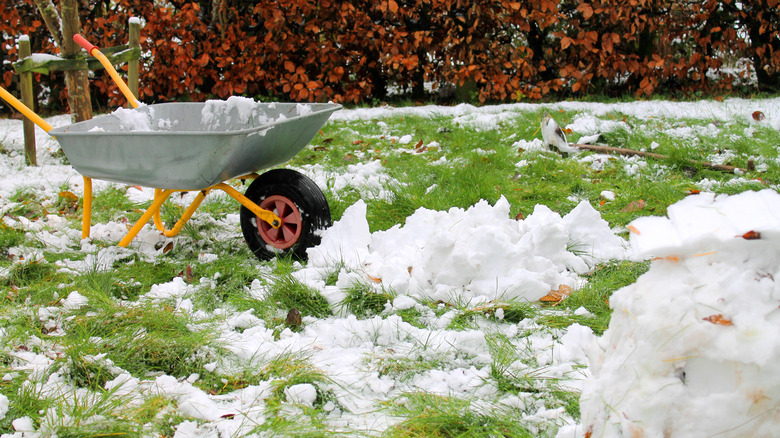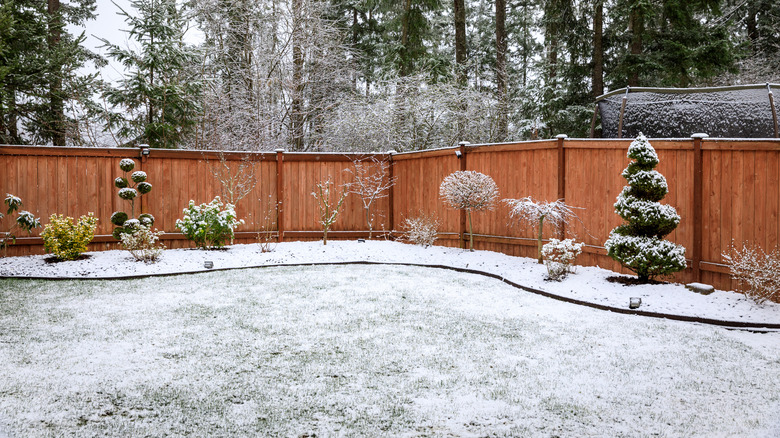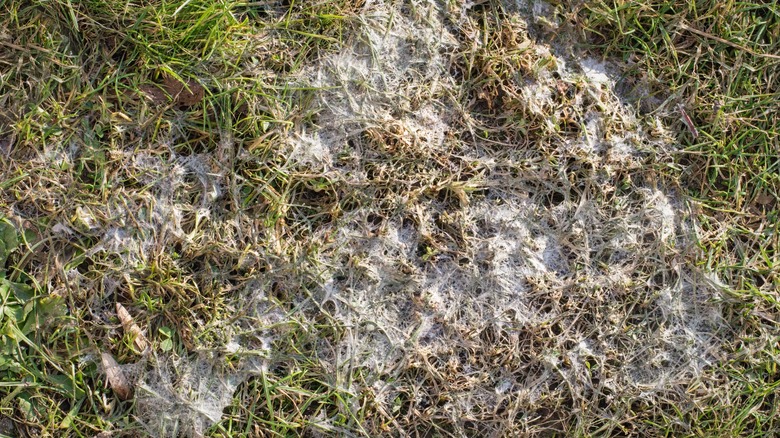Should You Remove Snow From Your Lawn?
After working to keep your grass beautiful and green throughout the summer months, you may be tempted to shovel snow off your lawn in an attempt to protect it from the cold precipitation. You might also be thinking of shoveling pathways through your yard to allow pets or people to access certain areas on your property more easily. Unfortunately, this can cause serious damage to your grass, so it's best to let the snow be and allow it to melt on its own.
As it turns out, a layer of snow over your yard can prove beneficial for your grass, since it can actually insulate the blades, help them retain moisture, and provide nutrients to the soil once the snow begins to melt. Jonathan Hill, a lawn expert from Rolawn, explained to Homes & Gardens that grass is a sturdy plant that can make it through harsh weather conditions. "Even heavy snowfall tends to apply an even pressure on the lawn and it should bounce back when temperatures warm up," the expert explained. Further, while you shouldn't shovel snow off your lawn, there are some other things you should also avoid doing to help your grass survive the coldest months of the year.
The benefits of leaving snow on your lawn
When temperatures drop below freezing, grass is in its most vulnerable state. While grass is flexible in warmer weather, it becomes more brittle when it freezes. This is why walking over snowy grass produces a breaking sound, as the water inside the blades has frozen stiff and is now being crushed. Just like how walking over the grass crushes it, shoveling the snow off the grass in winter will also break the blades, as the sharp gardening tool could cut through them.
Additionally, letting snow sit on your grass can actually be beneficial for your lawn, as it can help keep the ground from freezing as much as it would without the cover. Therefore, this gives your lawn protection from the bitter air, as the snow insulates the grass beneath. Further, snowflakes pick up nitrogen from the air as they fall. Therefore, once the snow eventually starts to melt either throughout the winter or in the spring, your lawn will receive a slow watering that contains nitrogen, a vital nutrient for all plants. This will help your grass as it begins to grow back after the harsh weather. Though snow might seem like it could damage your plants and your lawn, it's simply part of nature's life cycle.
How to help your lawn survive winter
In addition to refraining from shoveling snow off of your lawn, once temperatures have dropped below freezing, it's best not to step on your grass or create any additional stress for the plants. If the snow is very deep, walking over your lawn may not damage it, as you likely won't step onto the grass itself but just the layers of snow. However, if you've only received a light dusting or a couple of inches, you may damage the blades below your boots. Further, it's also crucial not to shovel snow from driveways and sidewalks onto your lawn. This will add more weight to the lawn in certain areas that could harm the grass. It could also lead melting salt to harm your plants and soil as well.
Those in areas with extreme snow may have issues keeping their lawns healthy, especially if the grass was long or if an abundance of leaf debris was left behind. In these conditions, too much moisture can be trapped under the snow and a fungus known as snow mold can begin to affect your grass. This type of mold can be pink or gray and will likely need to be treated in the spring once the snow has melted. To protect your lawn from this disease, instead of shoveling your property, ensure that you mow and clear your yard of excess debris before the cold weather begins.


